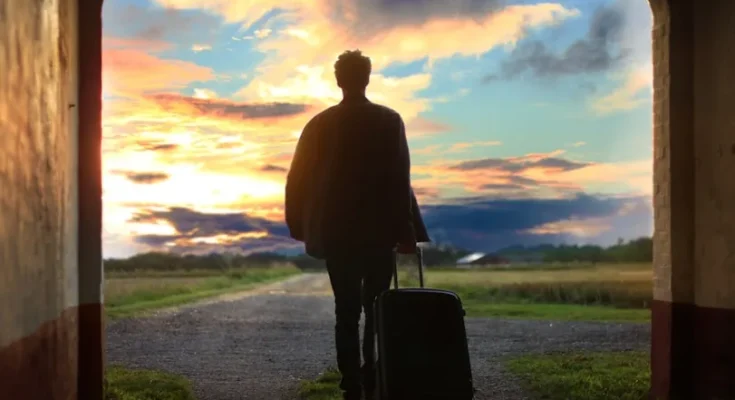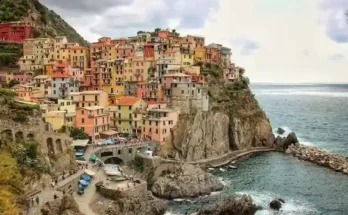Travel is more than just movement. It is discovery, transformation, escape, and sometimes, even a return to self. Whether journeying across oceans or wandering a nearby forest path, travel invites us to reimagine what we know, step outside our comfort zones, and engage with the vast, vibrant tapestry of the world.
From the ancient Silk Road to the arrival of commercial airlines, the way humans travel has dramatically evolved. Yet, the soul of travel—curiosity, exploration, and connection—remains unchanged. We’ll trace the timeline of travel, compare old and modern styles, and dive into the many types of journeys people embark on today.
The Evolution of Travel:
Humanity’s need to move is as old as our existence. But the ways in which we’ve traveled have changed dramatically through the ages.
-
Ancient Travel
Long before trains or airports, travel was slow, perilous, and often reserved for the brave—or the desperate. Early humans were nomads, walking in search of food, shelter, and more temperate climates. Travel wasn’t optional; it was survival.
As civilizations rose, so did trade and exploration. The ancient Egyptians traveled the Nile in reed boats, the Greeks set sail across the Mediterranean, and the Chinese established extensive routes like the Silk Road, connecting East to West through dangerous deserts and mountains. Caravans of camels marched across dunes while seafarers chased stars and winds.
Travel was mostly limited to merchants, armies, and explorers. Pilgrimages to sacred places also became common in religious traditions, inspiring long, spiritual treks such as the Hajj in Islam or the Camino de Santiago in Christianity.
While rich in adventure, ancient travel was grueling. There were no hotels, no maps, and certainly no GPS. The risks were real—bandits, storms, disease, and the sheer exhaustion of crossing continents on foot or horseback.
-
The Birth of Modern Travel
The Industrial Revolution changed everything. Steam-powered ships and locomotives reduced travel time from months to days. By the 19th century, travel for pleasure—the earliest form of modern tourism—began to emerge. Aristocrats took the “Grand Tour” of Europe as a cultural rite of passage. Suddenly, seeing the world was not just a merchant’s mission—it became a fashionable endeavor.
Fast forward to the 20th century, and the invention of the airplane redefined global mobility. Commercial flights democratized long-distance travel. What once took weeks by sea now took hours by air. With the rise of budget airlines, travel became increasingly accessible.
Then came the digital revolution. Online bookings, GPS navigation, and translation apps eliminated many of the friction points. Today, a solo traveler can book a round-the-world trip from a smartphone in minutes.
Comparing Ancient and Modern Travel:
While the modes of transport have changed, the essence of travel—a thirst for new experiences—remains. Still, the contrast between ancient and modern travel is stark.
-
Ancient Travel
Travel in ancient times was a test of will and stamina. It demanded careful planning, physical strength, and often, luck. Each journey was a commitment—days, months, even years long. Stories weren’t told in Instagram posts; they were passed down in oral tradition or written in dusty journals.
Accommodations were crude, meals unpredictable, and every mile carried the real possibility of never returning home. But it was also more intimate. Travelers engaged deeply with local cultures, not because they wanted content—but because it was the only way to survive.
-
Modern Travel
Today, we zip from continent to continent with ease. Five-star hotels, international cuisines, and instant connectivity mean we can explore without ever feeling too far from home.
However, modern travel can sometimes feel rushed or superficial. With so many destinations and so little time, experiences can blur into one another. We often chase photos more than presence, ticking countries off a list instead of truly immersing ourselves.
Yet, modern travel has opened the door for cultural exchange, global awareness, and individual transformation like never before. We now travel not only to see the world, but to understand it—and perhaps even to heal it.
Types of Travel:
Travel is not one-size-fits-all. Just as no two travelers are alike, there are countless ways to explore the world. Each type of travel speaks to different motivations, dreams, and life stages.
-
Leisure Travel
This is the most common form—think beach holidays, city breaks, and sightseeing tours. Whether it’s a romantic getaway to Paris or a sun-drenched resort in the Maldives, leisure travel is all about relaxation and escape.
-
Adventure Travel
For those who crave adrenaline, adventure travel offers everything from mountain trekking to scuba diving and skydiving. It’s for the bold and the brave, pushing limits in nature’s playgrounds.
-
Cultural Travel
This form focuses on deep immersion into the local heritage, art, food, and traditions. Travelers might take cooking classes in Tuscany, explore ancient temples in Cambodia, or attend indigenous festivals in South America.
-
Eco and Sustainable Travel
With rising awareness of climate change, many now opt for eco-friendly travel. This includes low-impact accommodations, wildlife conservation tours, and carbon-conscious transport. It’s about exploring the world without harming it.
-
Business Travel
Though less glamorous, business travel is a vital aspect of global commerce. Conferences, meetings, and networking events take professionals across borders regularly, often blending work with a touch of tourism.
-
Pilgrimage and Spiritual Travel
Like ancient times, spiritual journeys continue today. People travel to sacred sites, monasteries, or retreat centers to reconnect with their inner selves, whether it’s Mecca, Varanasi, or Machu Picchu.
-
Solo Travel
More people are choosing to explore alone. Solo travel allows for self-reflection, freedom, and personal growth. It can be intimidating, but also incredibly rewarding.
-
Family and Group Travel
Traveling with loved ones fosters bonding and shared memories. Group tours also offer structure, safety, and a sense of community—ideal for larger families or older travelers.
The Future of Travel:
The next frontier of travel is already here. From space tourism to virtual reality experiences, the way we move and connect is expanding in mind-blowing directions.
Sustainable practices are becoming the new norm, with electric planes, green hotels, and regenerative tourism on the rise. Travel will likely become more conscious, more meaningful. Slow travel—staying longer, doing less, and connecting more—is gaining traction over fast, checklist-style tourism.
Technology will continue to enhance travel experiences, but the real magic will still lie in the same ancient truth: stepping into the unknown and returning transformed.
Conclusion:
Travel is not a luxury—it’s a part of who we are. From the earliest nomads to modern digital nomads, we’ve always moved to find something more: knowledge, peace, beauty, or perhaps just a better version of ourselves.
In every age, travel redefines itself. And yet, in every era, it remains a mirror—reflecting not only the world but our deepest desires within it. Whether by camel, train, plane, or someday even spaceship, we will keep wandering, because to travel is to live.




